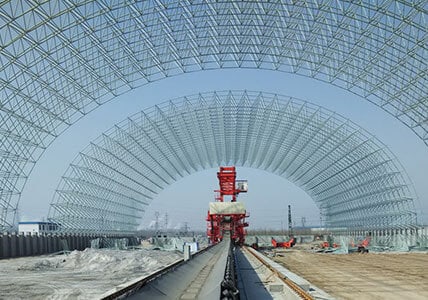Coal gasification is a process that converts coal into synthesis gas, or syngas, a mixture of hydrogen and carbon monoxide, which can be used as a fuel or as a chemical building block. This technology has a long history and has seen significant advancements over the years. In this article, we will explore the process, its history, types, advantages, disadvantages, applications, environmental impact, and its future prospects.
Introduction
Coal gasification is a thermo-chemical process that breaks down coal into its basic chemical constituents using heat, pressure, and steam. The resulting syngas can be used as a clean fuel source or as a precursor for the production of chemicals and other products. This process is different from burning coal directly, as it produces fewer emissions and allows for the capture and storage of carbon dioxide.
The Process
The coal gasification process begins with the preparation of coal, which is crushed and pulverized into a fine powder. The coal powder is then mixed with steam and oxygen and fed into a gasifier, where it undergoes a series of chemical reactions at high temperatures and pressures. These reactions break down the coal into syngas, which is then cleaned and purified before being used as a fuel or a chemical feedstock.
Types of Coal Gasification
There are several types of coal gasification processes, including fixed-bed gasification, fluidized-bed gasification, and entrained-flow gasification. Each process has its own advantages and disadvantages, depending on the type of coal being used and the desired end products.
Advantages
One of the main advantages of coal gasification is that it allows for the use of low-grade coal, which is abundant and inexpensive. This can help to reduce the reliance on higher-grade coals, which are becoming increasingly scarce. It also produces fewer emissions than traditional coal combustion, making it a cleaner alternative for energy production.
Applications
Coal gasification has a wide range of applications, including electricity generation, chemical production, fuel for vehicles, and heating and cooking. In the past, coal gas was used for lighting and heating in homes and businesses, but with the advent of natural gas and electricity, its use has declined. However, there is renewed interest in the process as a clean energy source, particularly in countries with abundant coal reserves.
Environmental Impact
While coal gasification is cleaner than traditional coal combustion, it still has environmental impacts. The main environmental concerns associated with it are greenhouse gas emissions, air pollution, land use impacts, and water use and contamination. However, these impacts can be mitigated through the use of carbon capture and storage technology and other pollution control measures.
Future of Coal Gasification
The future of coal gasification is uncertain, as it depends on a variety of factors, including technological advancements, regulatory policies, and market forces. However, there is potential for coal gasification to play a role in the transition to a cleaner energy future, particularly if it is combined with renewable energy sources such as wind and solar power. With continued research and development, it could become a more sustainable and environmentally friendly energy option.
Conclusion
Coal gasification is a technology with the potential to transform the way we produce energy and chemicals. While it has its drawbacks, such as high costs and environmental impacts, it also offers significant advantages, such as cleaner energy production and the utilization of low-grade coal. With further research and investment, it could become a key part of our energy future.





